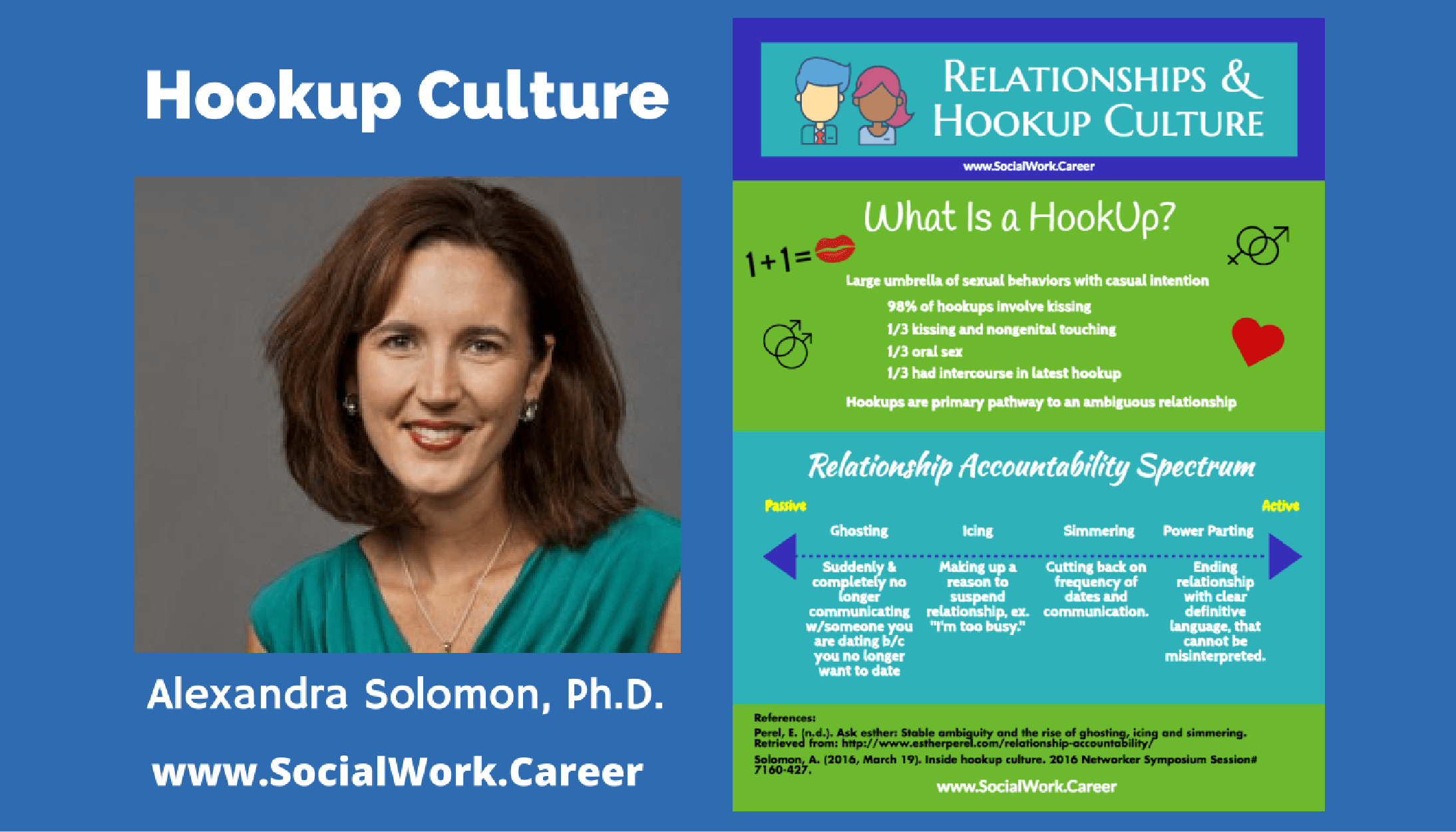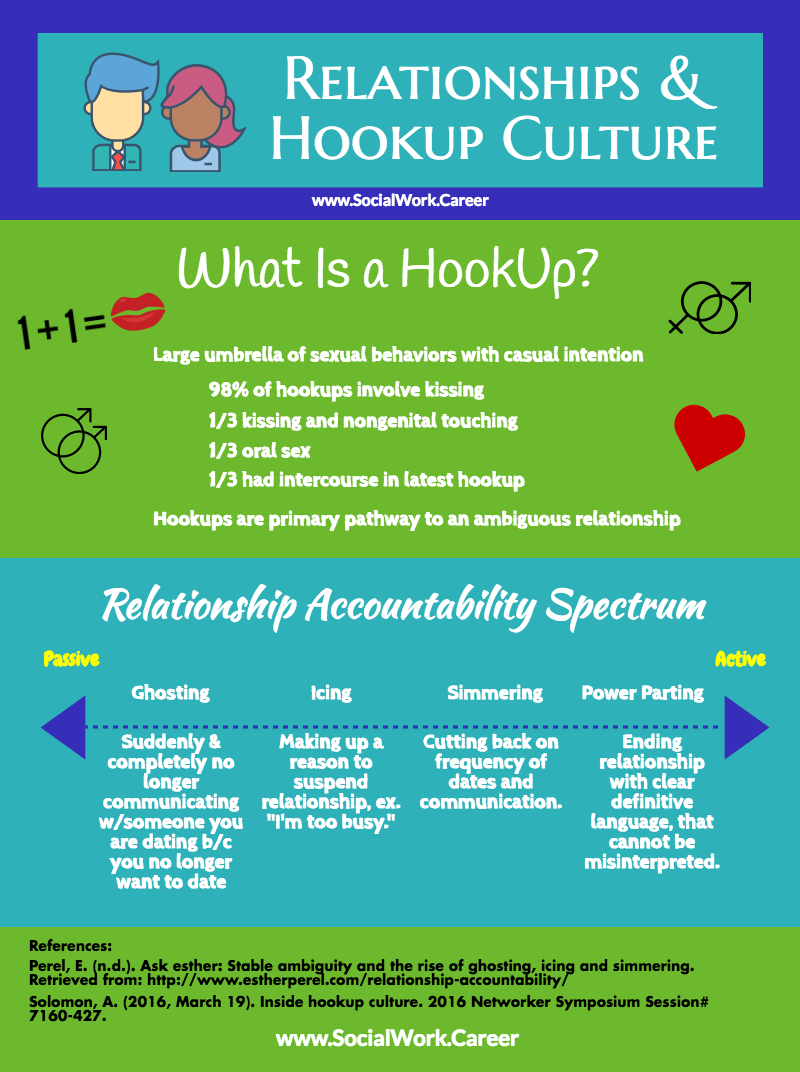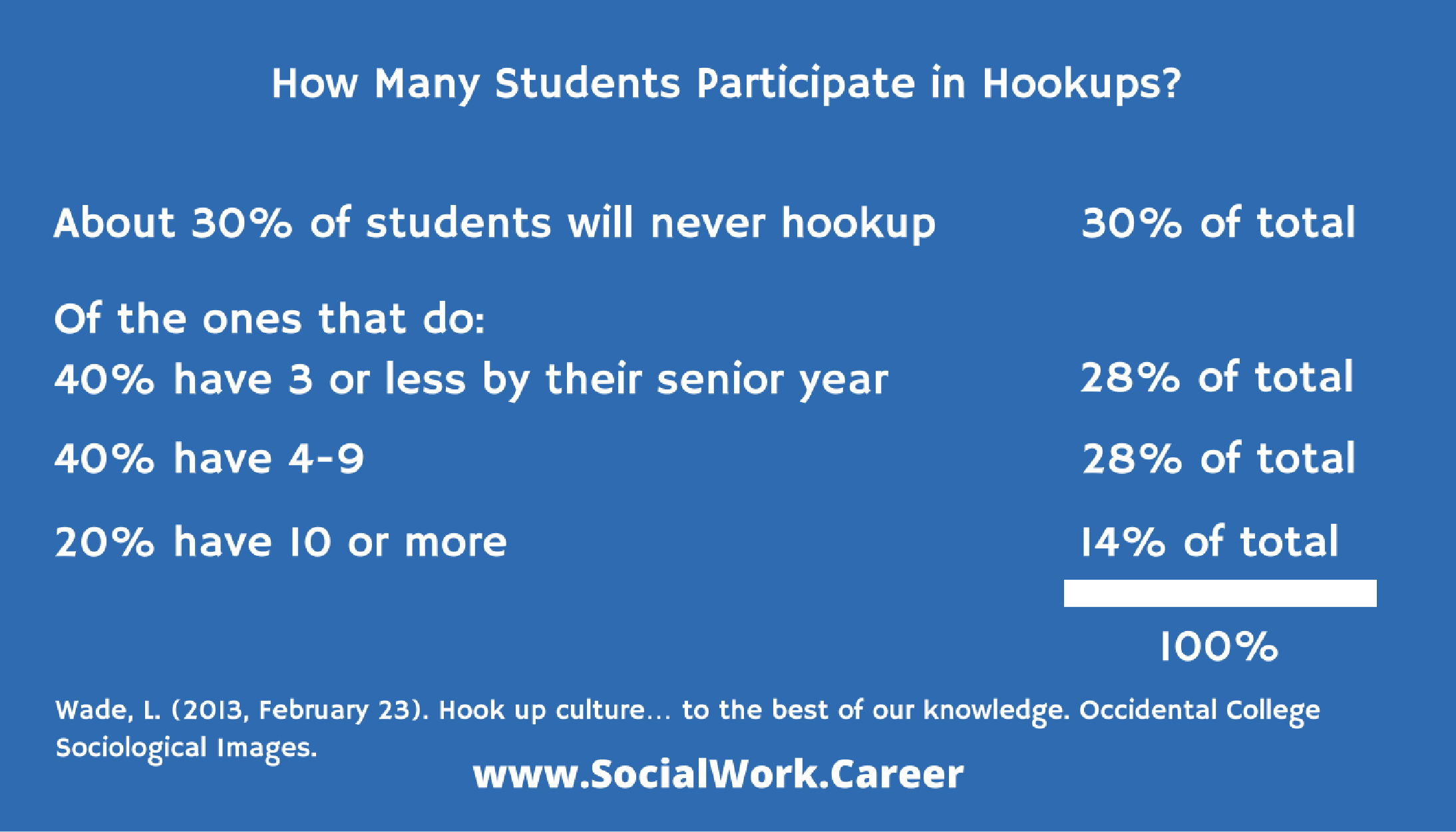 Have you found the term hookup confusing? Would you like to better understand hookup culture and more easily connect with your younger clients?
Have you found the term hookup confusing? Would you like to better understand hookup culture and more easily connect with your younger clients?
Alexandra Solomon, Ph.D. gives a great introduction in her talk “Inside Hookup Culture” at the 2016 Psychotherapy Networker Symposium. In part one of this post, you will be given a brief overview of the hookup culture.
Part two shares some of Solomon’s guidance on how to talk with your millennial clients to navigate this terrain to best meet their needs.
What Is a Hookup?
The actual term “hookup” begs for clarification. This is because when clients mention that they have engaged in a hookup, it doesn’t actually tell you anything. A hookup covers a broad range of sexual behaviors, essentially anything from kissing to sex.
To find out what it means for your client in a particular case/scenario, ask something like, “what did it/your hookup involve?”
Based upon the research Solomon shared:
- 98% of hookups involve kissing
- 1/3 kissing and nongenital touching
- 1/3 oral sex
- 1/3 of participants had intercourse in latest hookup
- Most involve alcohol (it is normative to be drunk)
The whole intention behind a hookup is to be casual; they are “trying NOT to catch feelings, no drama” and “being sexual and playing it cool.”
How Common Are Hookups?
In terms of prevalence, hooking up is indeed common among college students, as per the figures provided by Lisa Wade, Ph.D. (2013) below. That said, about 30% of college students do not hookup.
Interestingly, Wade found that participation in the hookup culture appears to be influenced by social status. College students at the top of the social status hierarchy are more likely to hookup.
In other words, heterosexual, white, conventionally attractive, middle or upper class and non-church going individuals are more likely to hookup than their counterparts.
Millennials Are Ambivalent about HookUp Culture
As per Wade, the vast majority of students don’t like or are have mixed feelings about the hookup culture.
Do they like it [the hookup culture]?
Definitely ~ 10%
Ambivalent ~ 50%
No way ~ 35%
Despite the ambivalence, as per Solomon, hookup culture is the dominant pathway to establishing a relationship. Typically, after 5 to 7 separate hookup occasions, a pair will meet up for coffee and then move into a relationship that will likely have an ambiguous status (likely sexually exclusive but probably NOT emotionally exclusive/dating/girlfriend/boyfriend). They are typically afraid of being vulnerable and clarifying what they mean to each other.
Hookups are an attempt to balance fun and risk, a way of having friends with benefits, but not a boyfriend. Traditional dating is uncommon, although three-quarters (74%) have had one relationship that lasted 6 months or more. Over half want their hookup to become something more (66% of women; 58% of men).
Nearly all say that they want to get married (90%) but marriage is a capstone, not a cornerstone. In other words, they plan on first getting their careers in place before getting married and view getting into a real relationship too soon as potentially derailing them from their plans.
In addition, as per Donna Freitas in her below TED talk, hookup culture leads to alienation, shame, sadness and a lot of suffering. Many students wish there would be dating but they think they are not allowed to, and do not know how to ask someone out.
Below is Donna Freitas’s talk that you may enjoy listening to:
How Do Millennials Meet?
In college, students easily meet other students on campus. After college, twenty-somethings look for love via online dating apps.
How do the dating apps work? On each app, there is a series of potential partners (with photos and brief profile descriptions).
“You swipe right if you are kind of into the person and you swipe left if you’re not.”
These dating apps end up leading consumers to the paradox of choice. When you have too many options (or partners) to choose from, you are likely to have a very difficult time choosing a hookup partner and you are likely to end up feeling less satisfied with your selection.
This method of meeting a partner is indicative of a paradigm shift that is taking place. It is taking individuals away from doing internal work, doing the work to become wholly relational partners, to looking outside of self as the foundation for a relationship.
The popular dating apps being used are Tinder, Bumble, Hinge and Happen.
Bumble is an app for heterosexual couples whereby the woman has to make the first move. Compared to the other dating apps, this one is likely to make a woman feel more empowered.
Hookingup is often a group activity.
Twenty-somethings get dressed up together, swap phones and swipe. This is a type of crowd-sourced communication. They are rewriting each other’s captions, picking out different photos for each other’s profiles and swiping (i.e., matchmaking for their friends). When everyone can create matches for others, it makes it even harder to listen to your gut or sense of internal wisdom.
There are now many more years before marriage and the peer group remains more central for a longer time in a young adult’s life. Part of the reason they hookup is for the stories they share.
Within the hookup culture, there are the terms ghosting, icing, simmering and power parting as depicted in the graphic below (Esther Perel, n.d.).
Ghosting refers to breaking up with someone suddenly and completely, leading the person being left to feel the most confused, hurt and resentful.
Power parting, on the other hand, involves a clear and open break, allowing the person being left to heal the quickest and have the least resentment or confusion.
Sadly, as a result of the 40% decline in empathy levels that has taken place over the last two decades, many individuals are employing the more passive ways of parting with a partner (ghosting/icing) because it is easier way to do so than the more active and empathic methods (power parting).
To become more informed about this culture, Solomon recommends that we read:
- The End of Sex by Donna Freitas [affliliate link]
- The End of Men: And the Rise of Women by Hannah Rosen [affliliate link]
In sum, contrary to the predominant hookup culture, many Millennial students would like to have real dates and develop emotionally based relationships but do not know how to do so, or feel that they are not allowed to.
What Can Institutions/Educators Do?
As per Wade, college and university leaders and educators can help by:
- Starting a campus conversation about hookup culture (on the first day students arrive)
- Talking about pleasure
- Talking about the students who AREN’T hooking up (30% never; 28% 3 or less by senior year)
- Rethinking their alcohol policies
- Ensuring that campus events interrupt the hookup script
- Taking steps to minimize its harm
- Enhancing student body diversity and nurturing subcultures
Please check out part two in which I am sharing Solomon’s key take-aways for how mental health professionals can help younger clients cope with this environment.
What are your thoughts, or suggestions regarding hookup culture?
Like this post? Please share it!
References:
Perel, E. (n.d.). Ask esther: Stable ambiguity and the rise of ghosting, icing and simmering. Retrieved from: http://www.estherperel.com/relationship-accountability/
Solomon, A. (2016, March 19). Inside hookup culture. 2016 Networker Symposium Session# 7160-427.
Wade, L. (2013, February 23). Hook up culture… to the best of our knowledge. Occidental College Sociological Images.




Great article! I see a lot of Millennials, so it is very helpful to gain more insight on this generation and ideas of areas to explore.
Thanks so much for your kind feedback, Lesley!
I too found Dr Solomon’s training most enlightening about the main issues of concern to Millennials and the impact technology has had on their relationships.
Thanks again,
Dorlee